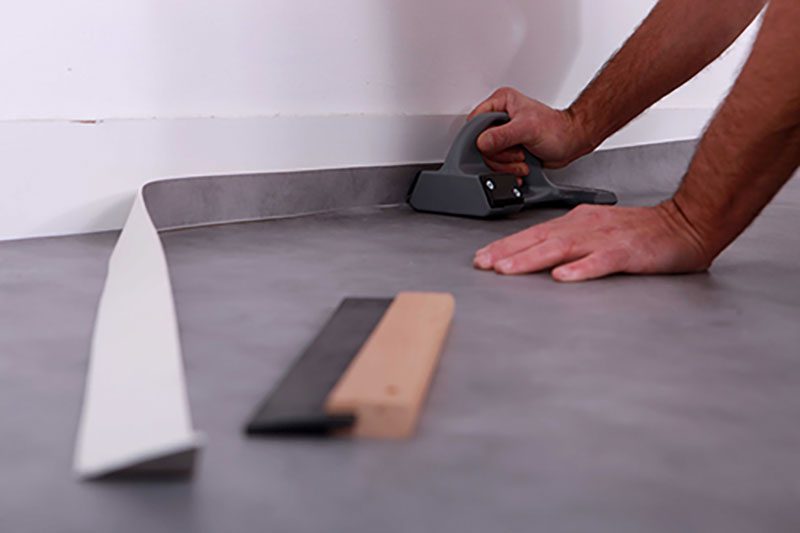
For those of us who are old enough to remember growing up when there was no such thing as the internet or social media, you’ll probably think of Linoleum with mixed emotions. Lino was the flooring of choice in many houses because it was available in patterns, it was hard wearing and wipe clean (or at least easy to mop). It also brings memories of being very cold and not very comfortable underfoot, and those patterns in the Sixties and Seventies are still the cause of nightmares! In fact, there was almost a revolution against it as the decades progressed with it not even in the consideration list if you could afford something more luxurious. But Lino has seen a bit of a resurgence in recent times
The History of Linoleum
Linoleum (derived from the Latin words “Linum” for “flax” and “oleum” for “oil”) was actually invented by an Englishman over 160 years ago in 1855. Frederick Walton discovered that when linseed oil solidified it formed a rubbery, flexible skin and that it might be an ideal substitute for India rubber. The problem was that the process took too long, however, Walton was able to speed this up by heating it. He patented it and started the Linoleum Manufacturing Company in 1864. The original Linoleum was intended for use as a ship deck covering – otherwise known as “battleship Lino”.
Although Lino has been around a long time (there was even a town named after it in America!), it really came to the fore in the 1950s as it was considered ideal for high traffic areas such as hallways, kitchens and even used as a way of keeping carpeting costs down in the more “formal” rooms, as a surround for the carpet in the middle. However, Lino varied in quality and thickness (and still does), so was susceptible to tearing (especially by high heels!). More modern Linoleum has come a long way though, with thicker and more cushioned options available and of course lots of improved patterns to fit in with any type of property.
So how do you make sure that the Lino you have so carefully chosen lasts the course?
It all starts with a smooth and level floor of course. If your floor hasn’t been recently screeded, then it is worthwhile checking that it definitely doesn’t have any uneven areas, such as bumps or sharp points – even tiny ones could ruin the finished look. If you are putting Lino on top of a wooden floor, then it is worth seriously considering installing a level subfloor made of ply (or marine ply in areas that might get wet, such as bathrooms).
Once your floor is level, then you need the right adhesive for the Lino and floor type. There is nothing worse than your new flooring “bubbling” or shifting, especially away from the edges, for which you also need sealant. We offer a range of adhesives and sealants (not just for Lino!) and we can offer you advice on which products will be perfect for your specific situation.
Queens Avenue, Macclesfield SK10 2BB
UK Company Reg No: 14483832
VAT Reg No: 428308593